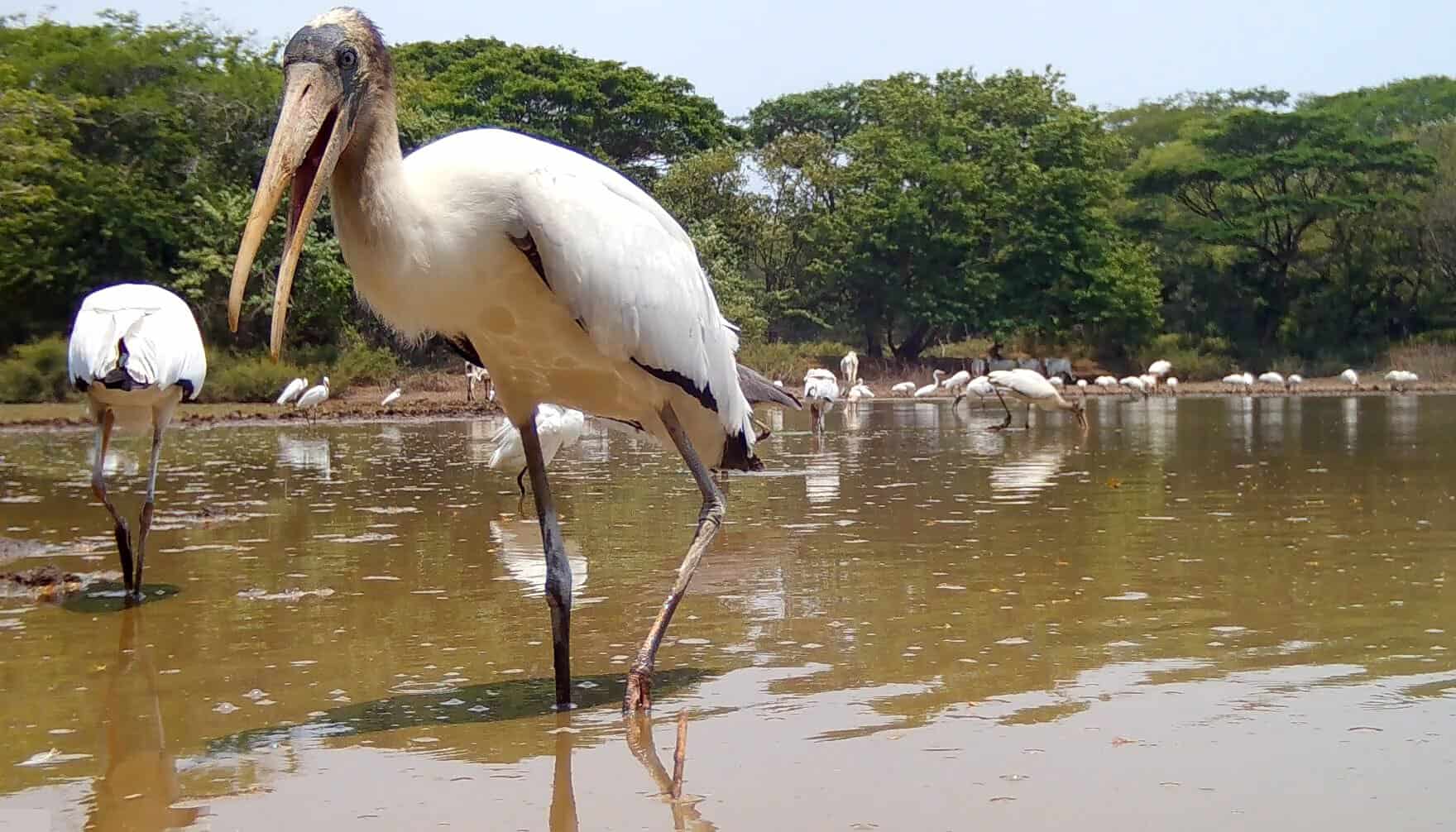The world of birds is similar to the worlds of cars and celebrities, the pretty ones often get the headlines. Today’s bird is not reaching the podium of the beauty contest, but that doesn’t mean it doesn’t have other features that make it interesting. It’s oddly tall, it works in unison with other members of its species to catch food, and it frequents environments that make for picturesque backgrounds of camera trap videos. Today we meet the wood stork.
The wood stork (Mycteria americana) is known as the cigüeñón or garzón in Spanish. I personally stick with garzón because cigüeñón has those two dots above the ‘u’ which frightens me because I don’t know what that means.
As I mentioned at the top, these birds aren’t super attractive. From a distance they’re fine. It’s a large white bird, over 3 feet tall, with some black on its wings and super long legs standing in a still body of water. No problems there. The problem arises when you bring those binoculars to your face to get a better look and the dark, featherless, wrinkly-skinned, vulture-like head comes into view.
Wood storks are another species of bird with a huge range, they’re found from the southern US down to northern Argentina. In Costa Rica, they’re found along both coasts and throughout much of the northern part of the country. They are particularly common in the Caño Negro region and around the Gulf of Nicoya.
These birds utilize their long legs to splash around in any open wetland environment. They’re found in both fresh and saltwater habitats, including mangroves, estuaries, marshes, and the edges of lakes, streams, and rivers. The wood stork’s diet consists of all of the small creatures that call these flooded environments their home. They mostly eat fish, but their diet is supplemented with crustaceans, insects, and amphibians. In Guanacaste, during the dry season large groups of wood storks will gather together to feed on fish that have become concentrated in the remaining puddles of formerly flowing rivers and streams. They work together to catch fish, moving as one in what one of my bird books describes as a phalanx (great word), sweeping their submerged, open bills back and forth, concentrating the fish into one area and snapping their bills shut when they come into contact with anything that moves.
I most frequently run into wood storks in the wild in sugarcane plantations and in dry season riverbeds like I described above. Sometimes, when a large group is feeding together in a puddle, I’ll hear them honking and snapping their bills at each other while jockeying for position long before I get close enough to see them. Usually when they catch sight of me, they’ll all fly off together in a great explosion of flapping wings.
I record wood storks fairly regularly with my camera traps. If I’m working in a watery environment, they’re not hard to come by. Even though they themselves aren’t terribly beautiful, they’re usually good camera trap models because they frequent beautiful wetland areas. Watch a few of my favorite wood stork camera trap video clips in the video below.
About the Author
Vincent Losasso, founder of Guanacaste Wildlife Monitoring, is a biologist who works with camera traps throughout Costa Rica. Learn more about his projects on facebook or instagram. You can also email him at: vincent@guanacastewildlifemonitoring.com






